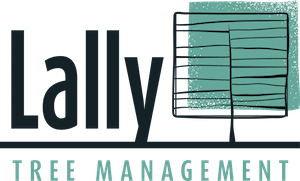Those who work in construction, demolition, design or renovation will be more than familiar with the BS5837 survey, but what exactly is it?
The British Standard for trees in relation to construction was updated in 2012 and is required by a local planning council wherever there are trees within the proximity of a planned development. The aim is to ascertain if any trees adjacent to or within a proposed development site will be adversely affected by the development proposals. The trees are graded from A (High Quality) B (Moderate Quality), C (Low Quality) U (Not realistically retainable for longer than 10 years)
Why Is the BS5837 Tree Survey Important?
Trees that are considered to be within a reasonable distance from the planned development need to be inspected, categorised and their vulnerability to any proposed plans estimated.
For instance, if the species of tree being analysed is capable of a large canopy spread then predictions around shading and how the branches will interact with any structures will need to be analysed.
The health of the tree itself must also be checked. This is because there are a great many diseases that can cause decline in trees over time. If the tree has a disease, it may be deemed that the long term viability of the tree does not justify its retention.
By having a BS5837 tree survey performed by a professional arborist / arboricultural consultant a developer can absolve themselves of responsibility in the event of any future issues by showing courts that they followed clear methods to protect trees laid down by the professional arborist / arboricultural consultant.
What Does the BS5837 Tree Survey Involve?
While the intricacies of the tree survey itself are too complex to discuss in detail, the arboricultural consultant will make recommendations on, but not limited to, the following elements:
- An assessment of each individual tree.
- The constraints posed by existing trees.
- Recommendations for the planting of new trees in place of those that may be removed.
- How the worksite should be monitored to ensure all recommendations are followed.
- The size of the root protection area and how this must be safeguarded.
- Proposed mitigation measures for any perceived threats to the trees
What Factors Influence the Importance of a Tree?
Whether a tree is retained or removed is not entirely up to the professional arborist / arboricultural consultant. The decisions are made alongside other professionals during the design process and are based on the requirements of the scheme, the quality of the trees, the visibility of the trees from public viewpoints, shading, and well the list goes on.
The professional arborist / arboricultural consultant will determine the species and age of the tree alongside its historic value, but also how much ‘useful life’ the tree itself has left. The tree will be given a check for diseases as well as its overall health, and enquiries must be made to learn whether it is subject to a Tree Preservation Order or is located within a Conservation Area.
Other information collected include the height of the tree, the diameter of the stem and to which direction the foliage and branches spread.
A failure to hire a professional arborist / arboricultural consultant to carry out a BS5837 Tree Survey during the planning stage can lead to serious delays in the planning process and even plans being rejected by the local planning authority, wasting time and money.
Matthew Lally has worked with trees across Europe for over 15 years. He holds a degree in arboriculture and is recognised as a LANTRA Professional Tree Inspector, and as a professional member of the Arboricultural Association. So, if you need of some friendly advice, a tree survey, a risk inspection, or a TPO consultation, why not contact Lally Tree Management today for a tree survey?
